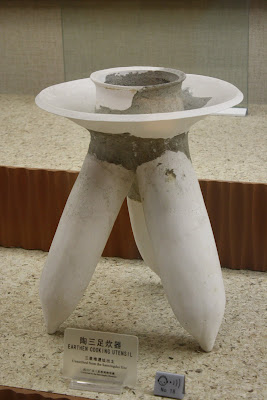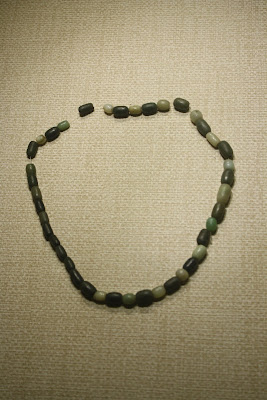The construction of this Buddha was started in 713 by a Chinese monk named Haithong. He hoped that the Buddha situated at at the confluence of the Minjiang, Dadu and Qingyi rivers in the southern part of Sichuan would calm the turbulent waters that plagued the shipping vessels travelling down the river. When funding for the project was threatened by a corrupt official, he is said to have gouged out his own eyes to show his piety and sincerity.The project was completed by Haitong's disciples in 803.It is believed that so much debris was thrown into the river that it altered the flow making it safe for ships

This word Fo means Buddha.It was written by the poet Su Tong Po who is a Sichuanese

You need to climb 333 steps to reach the top

Numerous carvings adorn the wall of the site.Most of them have eroded as sandstone is not a strong material


View of the Buddha from the river

After lunch we headed back to Chengdu to visit Qing Yang Gong.Qing Yang Gong Temple (Green Ram Temple) is the oldest and largest Taoist temple in the Southwest of China. Originally built in the early Tang Dynasty (618-907), this temple has been rebuilt and repaired many times. The existing buildings were mostly built during The Qing Dynasty (1644-1911).



The original rams in the temple has been lost due to wars and upheavals.This bronze ram was moved from Beijing in Sept 1723 during the reign of Emperor Yong Zheng of the Qing dynasty.This ram has body parts from animals of the Chinese zodiac-the mouth of a horse,tail of a snake,dragon's horn,rat's ear,monkey's neck,cock's eye,dog's belly and pig' rump...

Tihis bronze ram was added later

We went back to Jinli Street for dinner



 YuZhui or Fish Mouth is the first point where the waters of the Min river is tamed.The river is effectively cut into two.Excess water is diverted to the left of the photo.Water on the right continues its flow and will reach a second flood control measure
YuZhui or Fish Mouth is the first point where the waters of the Min river is tamed.The river is effectively cut into two.Excess water is diverted to the left of the photo.Water on the right continues its flow and will reach a second flood control measure Water from the left of Yuzhui flows here.A modern dam has replaced the anicent dykes
Water from the left of Yuzhui flows here.A modern dam has replaced the anicent dykes Rocks in bamboo baskets are still used today
Rocks in bamboo baskets are still used today
 We visited Dufu's cottage beforemheading back to the hotel
We visited Dufu's cottage beforemheading back to the hotel
 Researchers think that this is the site of DuFu's cottage
Researchers think that this is the site of DuFu's cottage














































